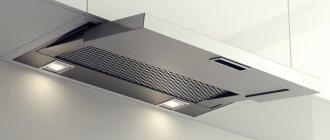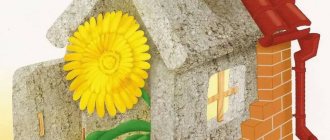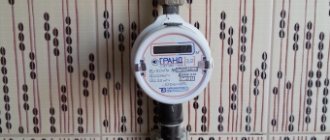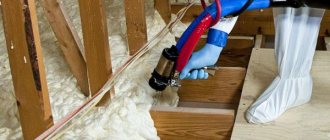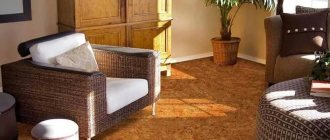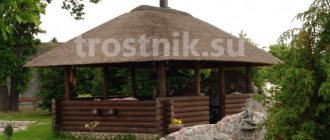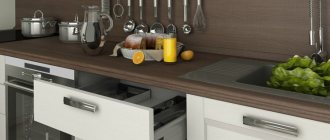A wooden toilet of the “hole in the floor” system is not only cheap, cheerful and indescribably fragrant, but also dangerous for fines. Therefore, it is not surprising that many owners of summer cottages are beginning to consider a dry closet as the main alternative to the usual “houses for privacy.”
Not all settlements, let alone SNT, can boast of having a central sewerage system. Therefore, most often, summer residents install “traditional” toilets on their plots. At the same time, according to SNiP 30-02-97, it is not enough to simply dig a hole in the far corner of the site and put a wooden shed on it.
Firstly, certain sanitary standards must be observed, according to which the toilet should be located at a distance of 12 m from residential buildings, cellars and playgrounds, 8 m from wells and other sources of drinking water, 1 m from the fence.
Secondly, according to the same sanitary standards, in the absence of a central sewerage system, it is permissible to build only certain types of toilets on the site: dry toilet, powder closet (peat toilet), backlash closet (outdoor toilet with an isolated cesspool).
Please note that often, when speaking about dry closets, they mean not only dry closets as such, but also peat powder closets.
Depending on the method of decomposition of biomaterial, dry toilets are divided into three categories: peat, chemical (liquid) and electric.
Electric dry closets for summer cottages
Electric dry closets are not very popular among summer residents. Firstly, they are noticeably more expensive than peat and chemical analogues, and, secondly, their operation costs a pretty penny. However, in some situations, the use of just such dry closets is the only way out of the situation.
The container, which is installed under the toilet bowl, is divided into two sections - for solid and liquid waste. A drain system is connected to the liquid tank, through which waste is removed from the room. Solid waste is dried at high temperature, and the unpleasant odor is discharged into the ventilation pipe.
Advantages: ease of operation, minimal maintenance (cleaning several times a year), absence of unpleasant odors, high environmental friendliness.
Disadvantages: electricity is required, requires drainage and ventilation, high maintenance costs (at high electricity prices).
Who is it suitable for? For summer residents who do not have the physical ability to empty the toilet frequently.
How to build a seat with capacity?
The simplest dry toilet is a seat with a container installed in a separate structure. It will require a storage container of 20 liters, made of non-corrosive material. It is desirable that it be in the shape of a bucket. In addition to the container you will need:
- square block (5:5 cm);
- plywood or chipboard 1.5 cm thick.
And also tools:
- roulette;
- jigsaw (preferably electric);
- hammer;
- screwdriver
First, the necessary blanks are cut out. 4 legs with a height of 35 cm are made from a block. The following are prepared from plywood:
- 2 rectangles – 52:30 cm, for the side walls;
- 2 rectangles – 45:30 cm, for the front and back walls;
- 1 rectangle – 45:48 cm, for the lid;
- 1 strip – 45:7, for loops.
When everything is prepared, you can assemble. The legs are screwed to the short side of the side parts. They will protrude 5 cm on one side.
At the bottom, the legs will protrude 5 cm from the edge
Then the back and front walls are screwed to the legs, ultimately forming a box.
The box must have right angles without distortions
A bar is screwed to the back side, over the legs.
To attach the hinges, you must first screw the bar over the legs.
The lid is hung on it using hinges.
Before hanging the hinges, attach the lid to the box and mark the places for screwing in the screws with an awl
Now you need to make a hole.
To ensure that it strictly corresponds to the size of the container, the bucket is turned upside down, placed on the lid in the middle and a circle of the required diameter is drawn.
To make the hole match the size of the container, you need to draw it by turning the bucket upside down
The hole is cut with a jigsaw strictly according to the mark.
After cutting a hole with a jigsaw, you need to sand all wooden surfaces
After this, the wooden surface is sanded and coated with an antiseptic. To give the product a more attractive look, you can paint it, varnish it, or cover it with linoleum. It's up to you.
An overview of the main antiseptics is presented in the following article:
Peat dry toilets for summer cottages
Externally, a peat dry closet resembles a regular toilet. The only difference is that instead of the usual “leg” that hides the siphon and sewer outlet, under the toilet bowl there is a sealed tank in which waste products are mixed with peat. The latter enters the toilet from the “flush” tank or is loaded into the container manually (the most primitive models). In addition to peat toilets, there are also sawdust toilets. They work on the same principle, but instead of peat they use sawdust. When the lower tank is filled, the fully or partially processed substrate is taken out into the compost and spilled with EM preparations (Baikal EM1, Siyanie, Ecoberin, etc.).
The advantages of peat dry toilets: comparatively cheap, high environmental safety, ease of operation, long intervals between cleaning procedures, budget consumables, the ability to use for composting, a wide choice of models not only depending on the appearance, but also the volume of the waste tank.
Disadvantages of peat dry toilets: presence of odor (this problem is solved in expensive models), difficult to install in the house, low mobility, requires ventilation equipment (mandatory) and drainage (for frequent use), poorly suited for use in winter, since the temperature is lower 10°C bacterial activity slows down or stops completely.
Who is it suitable for? For summer residents who need to install a permanent toilet in an area without sewerage and for those who rarely visit their country house during the cold season. It will help solve the problem with the toilet in an area that is not yet developed.
Reviews
According to many consumers, for seasonal use in a country holiday setting, it is advisable to purchase the simplest and most mobile models that have a minimum set of functions, which allows you to avoid spending money on water supply and sewerage, as well as connecting electricity.
When living year-round in a private household, it is advisable to give preference to more modern, stationary structures that are resistant to temperature changes, do not require frequent emptying of the tank, and are also equipped with a system for saving peat filler.
Chemical dry toilets for summer cottages
In toilets of this type, waste products are broken down:
- special chemicals - a quick but not very environmentally friendly solution to the problem, in which the recycled material should be poured into the sewer;
- biological activators - a less fast, but more environmentally friendly option that allows you to use recycled substrate for composting.
The advantages of chemical dry toilets: complete autonomy, no odor, maximum mobility, ease of operation, a wide selection of models not only depending on the appearance, but also the volume of the waste tank, no need to equip drainage and ventilation.
Disadvantages of chemical toilets : they require more frequent flushing than peat toilets, the relatively high cost of “consumables”.
Who is it suitable for? An ideal solution for those who need to equip a toilet in the house, for example, for summer residents who often stay overnight at their dachas or want to make their stay at home more comfortable during rare winter visits. It will help solve the problem of going to the toilet at night for both children and adults. Thanks to their high mobility and autonomy, chemical toilets can be easily moved from one room to another, if the need arises.
Ready-made models
On sale you can find ready-made composting toilets of various sizes and modifications - from portable to large continuous chambers built into the basement. As a rule, the most advanced of them are equipped with control devices and equipment to create an optimal mode.
Small compact dry closets of this type may have special tanks for dry peat. The composition is automatically scattered evenly over the surface when you turn the handle. Stationary models can be equipped with a membrane built into the bottom and a pipeline to drain the liquid component of the waste.
The most popular brands of peat composting toilets include Piteco, BioComfort, Compact, Biolan, Ekomatik (Ekomatik).
Prices
If we arrange dry closets of different types according to increasing prices, then in terms of the level of “capital” investments, liquid models are the most affordable.
Liquid
Portable samples with a lower tank volume of 15 to 20 liters generally cost no more than 10,000 rubles. (prices start from 4,500 rubles). Although there are luxury products, for which you will have to pay a little more - for example, Thetford Excellence+ costs from 11,500 rubles.
Manufacturers evaluate dry closets familiar from city streets according to their level of equipment:
- “Economy class” costs from 13,500 rubles. ("Economy class);
- for the “standard” you have to pay 3000 rubles. more;
- “comfort” will cost almost 20,000 rubles;
- “VIP” (with heating and lighting) – about 30,000 rubles.
In fact, the VIP version is a standard set of toilet amenities for an ordinary city apartment Source racolta.ru
Project of a country toilet and shower under one roof
A toilet is good, but a toilet with a shower is even better. Both of these buildings create the comfort necessary in a dacha setting. By combining these designs you can save a little on material. Let's consider the project of a country toilet with a shower and its execution.
The toilet and shower have a common wall: this will help save on building materials
The proposed diagram shows that the toilet and shower have a common wall. This is the saving of building materials. This project is designed for the installation of a dry closet.
If a cesspool is used, the design is slightly modified.
To build such a structure, they first dig a foundation pit and strengthen its walls, and only then begin the construction of the building itself
Preparing the foundation for construction
First of all, a square pit with a side of 4 meters and 0.3 cm in depth is dug for the construction and covered with gravel to about 0.2 m.
After thoroughly compacting the base, formwork from wooden panels is knocked down for a foundation 0.3 m wide and 0.5 m high.
To make the foundation more durable, it is necessary to reinforce it
A sand-cement mortar is prepared and poured into the formwork.
Crushed stone is used as filler. When the concrete has set, remove the boards and cover the defects with mortar.
After removing the formwork, defective areas are sealed with mortar.
At the next stage, sewer pipes are installed.
Construction of a toilet for a summer house: drawing with dimensions for a “birdhouse” type structure
The design of the Birdhouse consists of wood, which can be covered with any other type of material. Construction of a single or gable roof is allowed. This type of closet is mounted as an above-ground building above the cesspool.
Typical design of a “Birdhouse” with dimensional parameters:
| Design element | Size, m |
| Rear wall (height) | 2 |
| Width | 1 |
| Front wall (height) | 2,3 |
| Base area | 1x1 |
When installing a wooden toilet structure, mandatory control of the placement of surfaces vertically and horizontally is necessary. For these purposes, it is recommended to use a building level.




